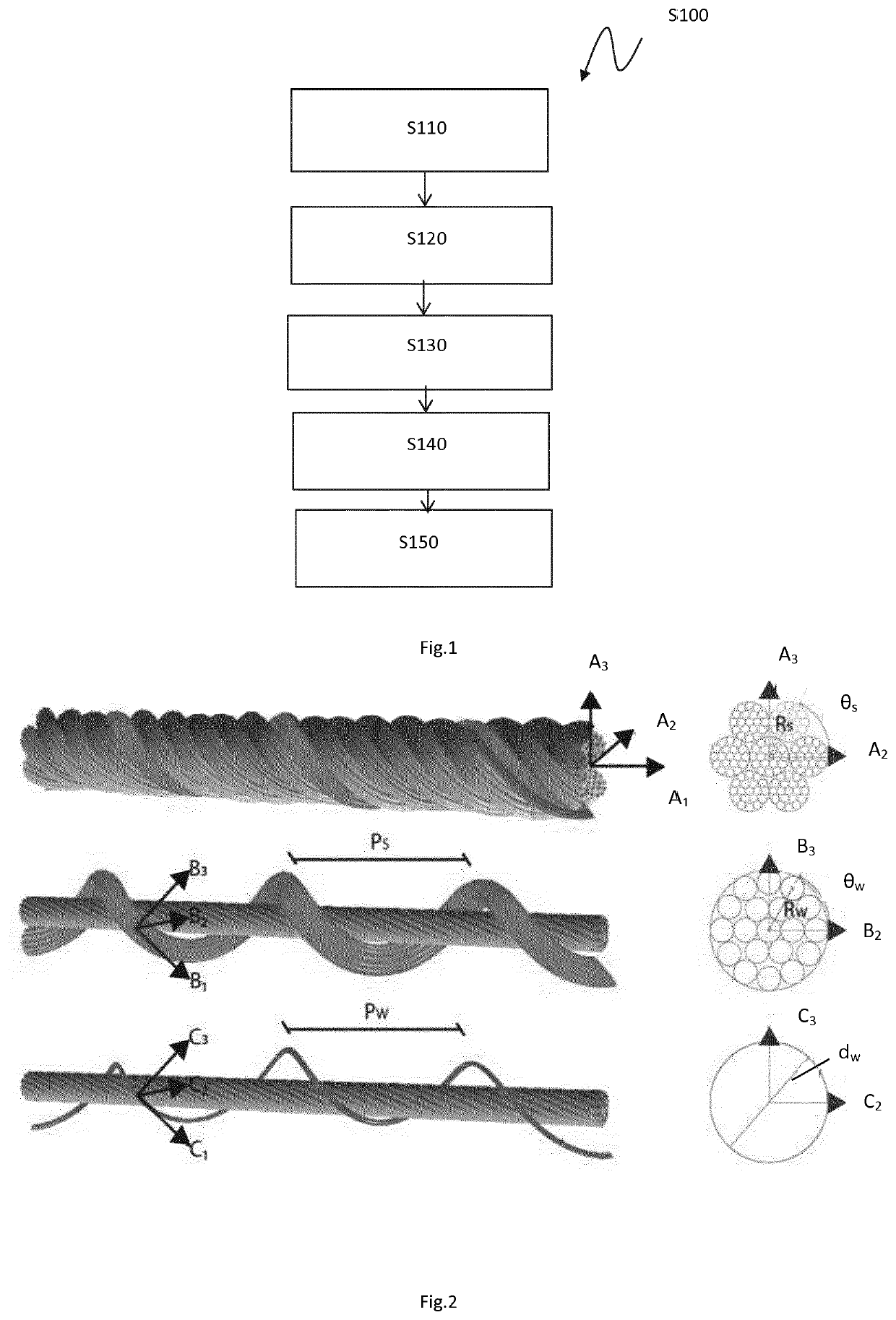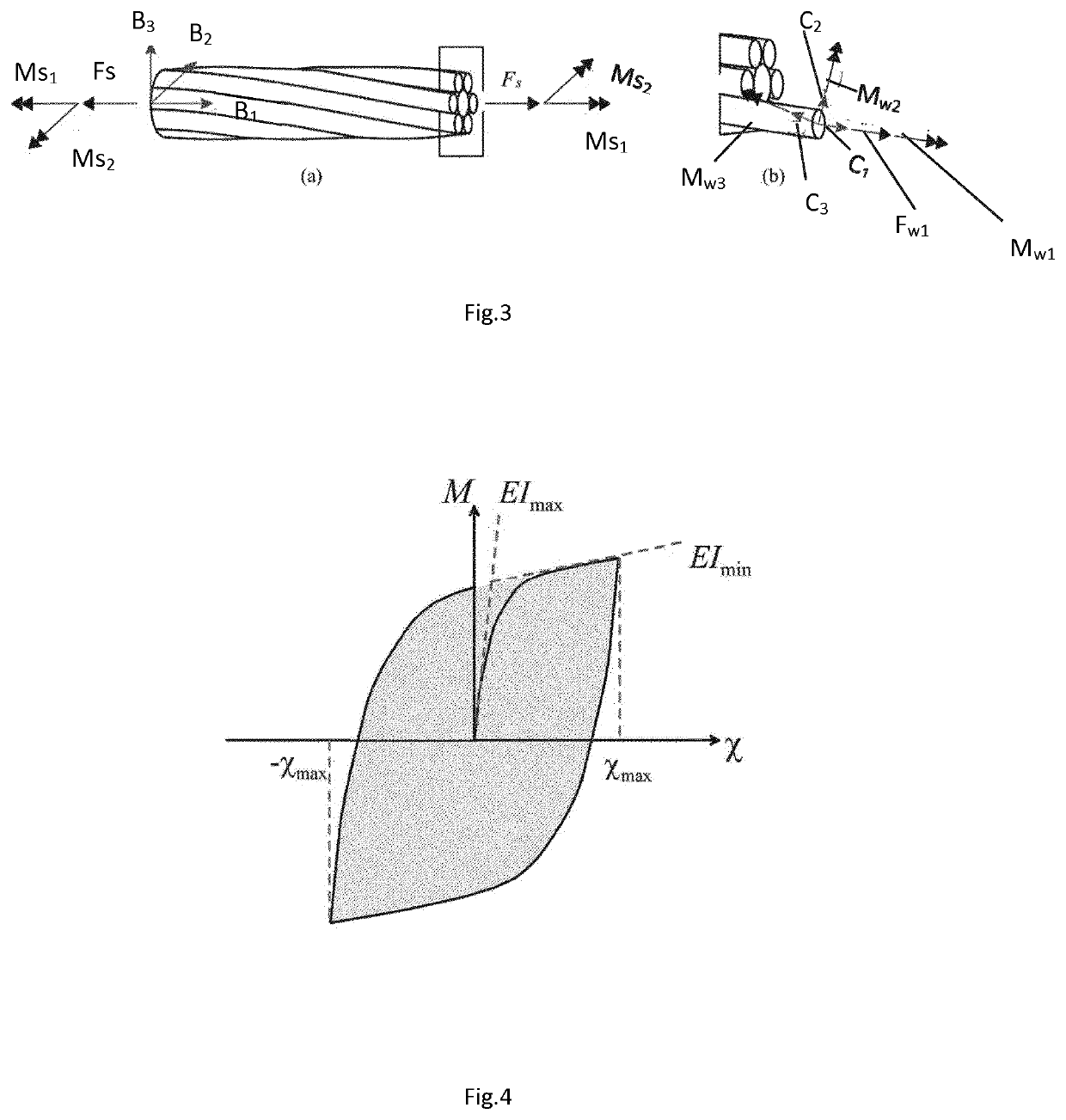Method for evaluating temperatures in active heave compensation ropes
a technology of active heave compensation and temperature, which is applied in the field of evaluating temperatures in active heave compensation ropes, can solve the problems of temperature on the same portion of the rope, wear, fatigue and temperature increment, and has not been addressed in-depth, and no known method is concentrated on specific investigation, so as to achieve the effect of fast deterioration of material ductility
- Summary
- Abstract
- Description
- Claims
- Application Information
AI Technical Summary
Benefits of technology
Problems solved by technology
Method used
Image
Examples
Embodiment Construction
[0017]A method for evaluating temperatures in active heave compensation ropes has been defined correlating mechanical models and thermal models. The calibration of the model has been carried out by performing a huge experimental campaign. Set up tests have been done combining inputs (Loads, speeds, D / d), with the scope to determine the wire rope's internal and external thermal variation (ΔT) with respect to the environment temperature. Referring now to the drawings and in particular to FIGS. 1, the method S100 for evaluating temperatures in active heave compensation ropes consists of the following chronological steps:[0018]S110 describe the geometry of wire ropes as composite structures obtained through assemblies of helical components in hierarchical levels: wires, strands and the rope itself;[0019]S120 use a mechanical model of the strand that represents the material properties of each wire, under the assumption of linear elastic behavior;[0020]S130 use a mechanical model of the r...
PUM
 Login to View More
Login to View More Abstract
Description
Claims
Application Information
 Login to View More
Login to View More - R&D
- Intellectual Property
- Life Sciences
- Materials
- Tech Scout
- Unparalleled Data Quality
- Higher Quality Content
- 60% Fewer Hallucinations
Browse by: Latest US Patents, China's latest patents, Technical Efficacy Thesaurus, Application Domain, Technology Topic, Popular Technical Reports.
© 2025 PatSnap. All rights reserved.Legal|Privacy policy|Modern Slavery Act Transparency Statement|Sitemap|About US| Contact US: help@patsnap.com


